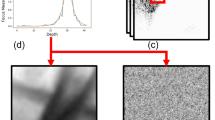Abstract
We present solutions to two problems arising in the context of automatically focusing a general-purpose servo-controlled video camera on manually selected targets: (i) how to best determine the focus motor position providing the sharpest focus on an object point at an unknown distance; and (ii) how to compute the distance to a sharply focused object point.
We decompose the first problem into two parts: how to measure the sharpness of focus with a criterion function, and how to optimally locate the mode of the criterion function. After analyzing defocus as an attenuation of high spatial-frequencies and reviewing and experimentally comparing a number of possible criterion functions, we find that a method based on maximizing the magnitude of the intensity gradient proves superior to the others in being unimodal, monotonic about the mode, and robust in the presence of noise. We employ the Fibonacci search technique to optimally locate the mode of the criterion function.
We solve the second problem by application of the thick-lens law. We can compute the distance to objects lying between 1 and 3 m with a precision of 2.5 percent, commensurate to the depth of field of the lens. The precision decreases quadratically with increasing object distance, but this effect is insignificant at the (small) object distances investigated.
The solutions are computed in the time required to digitize and filter 11 images, a total of approximately 15 seconds per point for this implementation.
Similar content being viewed by others
Explore related subjects
Discover the latest articles, news and stories from top researchers in related subjects.References
G.S. Beveridge and R.S. Schechter, Optimization: Theory and Practice, McGraw-Hill, New York 1970.
N. Goldberg, “Inside Autofocus: How the Magic Works,” POPULAR PHOTOGRAPHY, pp. 77–83, February, 1982.
E. Hecht and A. Zajac, Optics. Addison-Wesley: Reading, Mass., 1974.
B.K.P. Horn, “Focusing,” MIT Artificial Intelligence Laboratory MEMO NO. 160 May 1968.
IMSL User's Manual, “ZXMWD,” IMSL, Inc.: Houston, Tex., 1982.
R.A. Jarvis, “Focus optimisation criteria for computer image processing,” Microscope, vol. 24(2), pp. 163–180, 1976.
R.A. Jarvis, “A perspective on range finding techniques for computer vision,” IEEE Trans. Pami-5(2), pp. 122–139, (March) 1983.
S.M. Johnson, “Optimal search for a maximum is Fibonaccian,” RAND Corp. Rept. P-856, Santa Monica, Calif., 1956.
J. Kiefer, “Sequential minimax search for a maximum,” in PROC. AM. MATH. SOC. (4), pp. 502–506, 1953.
E.P. Krotkov, J.F. Summers, and F. Fuma, “The Pennsylvania active camera system,” University of Pennsylvania TR-86-15, 1986.
E.P. Krotkov, “Exploratory visual sensing with an agile camera system,” Ph.D. Dissertation, TR-87-29, Univ. of Pennsylvania, 1987.
M.A. Kujoory, B.H. Mayall, and M.L. Mendelsohn, “Focus-assist device for a flying spot microscope,” IEEE Trans. Biomed. Engineering, vol. 20, pp. 126–132, (March) 1973.
S. Ohteru, H. Kobayashi, and T. Kato, “Eyes of the WABOT,” in Learning Systems and Intelligent Robots, Julis T. Tou, (ed.), Plenum Press: New York, 1973.
A. Pentland, “A new sense for depth of field,” PROC. INT. J. CONF. ARTIF. INTEL., Los Angeles, pp. 988–994, August, 1985.
J.F. Schlag, A.C. Sanderson, C.P. Neumann, and F.C. Wimberly, “Implementation of automatic focusing algorithms for a computer vision system with camera control,” Carnegie Mellon Univ., CMU-RI-TR-83-14, August, 1983.
J.M. Tenenbaum, “Accommodation in computer vision,” Ph.D. Thesis, Stanford Univ., 1970.
L.E. Weiss, “Dynamic visual servo control of robots: an adaptive image-based approach,” Carnegie Mellon Univ., CMU-RI-TR-84-16, 1984.
Author information
Authors and Affiliations
Additional information
This work was supported in part by NSF/DCR 8410771, Airforce F49620-85-K-0018, DARPA/ONR, ARMY/DAAG-29-84-K-0061, NSF-CER DCR82-19196 A02, by DEC Corp., IBM Corp. and LORD Corp.
Rights and permissions
About this article
Cite this article
Krotkov, E. Focusing. Int J Comput Vision 1, 223–237 (1988). https://doi.org/10.1007/BF00127822
Issue Date:
DOI: https://doi.org/10.1007/BF00127822




